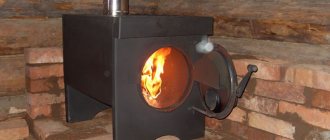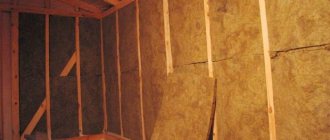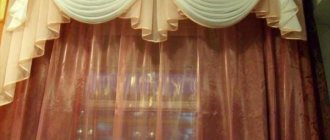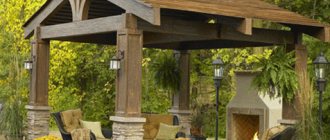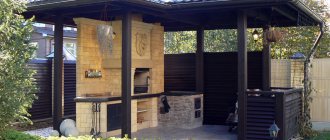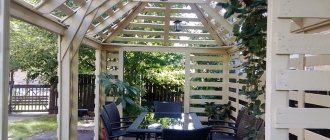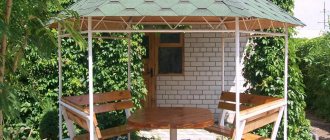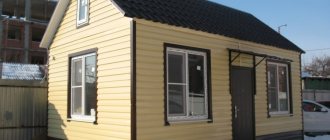German tiled stoves
Germany is a country of talented artisans, so it is not surprising that the most interesting antique stoves were made by German craftsmen.
Tiled stove at Heidelberg Castle
The 16th century was the heyday of the European Renaissance. The world of the “dark” Middle Ages was broken. People perked up, gained wealth and new self-confidence. This is a period of euphoria of the human spirit, which gave a lot for the development of European civilization in all areas of human activity.
The outstanding and most famous ceramicist of the Renaissance in Germany was Hans Kraut.
Rock earthenware oven from the Stockelsdorf factory in Lübeck
Johann Bartholomew Kraut (1532-1596), more often called Hans Kraut, was a potter from southern Germany, also known abroad. Creator of numerous ceramic products at the Austrian court. His most famous surviving work is a tiled relief stove from 1577, kept in the Victoria and Albert Museum.
Tiled stove at Heidelberg Castle
Hans Kraut is rightfully considered one of the most important ceramicists of southern Germany, for he was one of the first to bring Italian majolica across the Alps. He created many pieces new to Germany in the Italian Renaissance style, using drawings by Holbein and Raphael, although his main interest was in sculpture.
Tiled stoves at the Kiln and Ceramics Museum in Velten
Kraut made significant contributions to the decorative arts of Germany, using sculpture and bas-relief in his ceramics. His skill was so great that at the court of Archduke Ferdinand the Second he was accused of witchcraft, and as a result he was even buried outside the Christian cemetery. Two of his sons became followers of their distinguished father, and the name Kraut was famous among potters until the 18th century.
Museum of Kilns and Ceramics in Velten
German artisans have always been receptive to new trends in technology and pedantic in their implementation. The Germans were so successful in the production of stoves that over the centuries, molds for the production of ceramics were purchased from them by many European manufacturers of stove tiles and tiles. This is probably why the largest collection of various tiled stoves can be found in Germany, where applied art keeps pace with architecture, repeating all the main trends in art: from Gothic through the Renaissance to Baroque, Biedermeier and Art Nouveau.
Tiled stoves at the Kiln and Ceramics Museum in Velten
The heyday of German tile art occurred in the 17th-18th centuries. The tiled stoves at Hohenaschau Castle in Bavaria, Heidelberg Castle in Baden-Württenberg and many other castles in Germany date back to this period.
It is impossible not to mention the beautiful rock stoves made at the Stockelsdorf earthenware factory in Lübeck under the leadership of another famous German ceramist, Johann Buchenwald.
Tiled stoves at the Kiln and Ceramics Museum in Velten
Johann Georg Ludwig Boniface Buchenwald (1723–1806), an artist and director of several earthenware factories in Schleswig-Holstein, is one of the most important German ceramic artists.
Under the artistic leadership of Johann Buchenwald, German faience became one of the best in Europe, including in terms of its historical and artistic value.
Potbelly stove with Art Nouveau tiles in the museum in Velten
Another manufacturer of tiled stoves in Germany is the Meissen manufactory, which gave rise to the enterprise of Karl and Ernst Teichert, which produced tiled fireplaces and stoves until the mid-20th century. Noteworthy is the tiled wall produced by the Meissen manufactory, which still exists in Dresden.
But the most extensive collection of German ceramic tile stoves is collected in the stove museum in Velten. Such a large exhibition of stoves from all eras and styles, collected in one place, is probably not found anywhere else in the world.
Here are ancient Gothic tiled stoves, extraordinary Renaissance stoves, wonderful miniature Baroque stoves, intricately curved Rococo stoves and, of course, amazing Art Nouveau stoves.
Empire style tiled stove in the Kiln and Ceramics Museum in Velten
In one article it is absolutely impossible to describe all European tile and stove art - an entire book could be devoted to this. But we hope that we managed to interest you and perhaps you will take the time to visit the places we mentioned and especially the Kiln and Ceramics Museum in Velten.
Museum address
:
Ofen- und Keramikmuseum Velten
Wilhelmstraße, 32
16727 Velten
Telefon: 03304 / 3 17 60
Fax: 03304 / 50 58 87
- russian-mayolica.ru
Types of tiles
There is a wide range of tiles on sale; the variety of designs is simply impressive. The tiles have different room designs and may have artistic painting on them. This unique decor for fireplace cladding is made either without additional processing or has a glazed coating.
Depending on the intended use, the material is produced for decorating walls, cornices, plinths, facades, and corners of buildings. Tiled decor is produced either according to an author's design or using standard technology. There are differences both in the style of painting and in cost.
Advice! It is recommended to choose tiles in accordance with the overall style of the room so that everything looks harmonious.
There are several options for painting unique decor - tiles:
- Yaroslavskaya. Such ornaments are more suitable for rooms where it is necessary to add bright, original elements. The tiles have a large flower with floral patterns around the edges. The paints used here are: white, red, green. There is a thin relief on the surface of the ceramics, which makes the contours of the design more pronounced.
- Gzhelskaya. The motifs on the tiles in this style are made using dark blue and white paint. The blocks mainly depict decorative flowers and leaves. This exquisite, graphic version of painting looks best in the kitchen, bathroom, fireplaces, and stoves.
- Kaluzhskaya. The tiles are distinguished by their rectangular elongated shape, the design is framed, and it is painted in a rich color. Bright plants look impressive against a white background. There are also products that feature landscapes, buildings, and the life of peasants. The painting on the tiles is characterized as simple; pastel shades were chosen for its execution.
- Ant. For images in the style of minimalism, green colors are used, mainly light green and emerald. In contrast to the drawings with a pronounced frame, other elements are decorated in light and dark colors. The decor also contains episodes from peasant life and plants.
- Eastern. The tiles have quite picturesque patterns that are on a blue, brown or green background with a glazed coating. Golden and beige shades are used for floral designs. In addition to flowers, animals and riders can be depicted on the tiles. Small auxiliary elements are performed using a thin brush. The total number of working shades is 2-3.
- Dutch. This block design option is distinguished by its smooth surface; no relief inserts are used here. The decor has complex painting on a white background. The color used in the work is blue, beige, and terracotta. Landscapes and scenes from rural life look beautiful on the tiles.
- Italian. The facing material is made in a simple format, the drawings are quite clear, there is no difficulty in their perception. The floral patterns are designed using orange, green, brick and yellow.
According to the configuration, the tiles can have sides for ease of installation, cells, or an inclined cut. Blocks are produced in square (100×100, 200×200, 220×220 mm), rectangular (205×130 mm), polygonal and round shapes. The sizes of tiles are regulated by GOST 3742-47. The thickness parameters are 45-50 mm. If tiles are made according to an author's design, the dimensions may vary.
The front side of the ceramic can have a textured surface or a smooth one. To produce textured paintings, single-color or multi-component painting is used. Based on the type of surface, tiled tiles are divided into matte and glossy types.
Particularly popular are tiles with an aged surface, finished with gilding and engraving.
Secrets of laying tiled fireplaces and stoves
Unlike a conventional stove, a feature of the tiled laying process is the installation of the tiles themselves first, and only then the attachment of the brick body to them.
Tile stoves are erected in several stages, simultaneously facing them with tiles. Therefore, such masonry is quite complex and labor-intensive; it can only be entrusted to good specialists.
Unlike other materials, tile finishing is carried out in parallel with the masonry. It is quite complex and labor-intensive. Therefore, such work should be trusted only to masters who know all the secrets of this ancient art.
The tiles used to cover stoves and fireplaces are non-standard piece products. Therefore, the first stage of work is always sorting them by color and rejecting tiles with glaze defects or cracks. Ideally, culling should be done before purchasing, but if you have already purchased tiles, then darker tiles are laid out on the bottom rows, and those with small defects are laid out in inconspicuous places.
The second stage is adjusting the size of the tiles by processing them with a grinder and grinding the edges. First, the first sample is processed, which is subsequently used as a standard, adjusting the rest to it. When fitting, first carefully trim the back edge, and then the glazed front edge, so that when laying the glaze of adjacent tiles does not touch. Before laying, for better adhesion to the mortar, they are soaked in water.
If the stove is installed simultaneously with the installation of tiles, use fireclay-clay mortar. If the finished stove is covered with tiles, then it is better to use special Profix glue.
The construction of stoves and fireplaces begins with the laying of tiles. Bricks are then attached to their first row. In order to check the placement of tiles vertically and horizontally, experts recommend first laying a wall of tiles without mortar. After checking, you can disassemble it and begin laying it on the mortar from the corners. The procedure for tiling simultaneously with brickwork is shown in the photo: 1 - brickwork; 2 - tile; 3 — tiller; 4 - pins; 5 — staples; 6 - knitting rows with wire; 7 — fastening loops.
The pump is half filled with stones, pebbles or granite and clay mortar. The solution is applied level with the sides and the brick is pressed against the tile. The tiles are fastened with wire when the brickwork reaches the height of its row. The wire is passed through the bent parts of the attachment crutches. Then the wire is taken out into the masonry. In vertical rows, the tiles are installed closely and secured with steel staples. So that when the brick base shrinks, the tiles settle along with it, the thickness of the seams between the horizontal rows of tiles must be at least 3 mm.
Advantages and disadvantages
A tiled stove has a number of undeniable advantages, such as:
- Aesthetic pleasure from appearance. Such stoves are real works of art
- The tiled coating has the ability to accumulate heat from the stove and slowly release it into the surrounding space. It is almost impossible to get burned on such a surface, and the number of stove lights is noticeably reduced
- The surface of the stove can be easily removed from dust and dirt; a light wipe is sufficient.
- Tiles, unlike bricks, are not susceptible to absorbing moisture from the surrounding air.
There are few disadvantages to such stoves, but they are still present:
- Great labor intensity and long period of inlaying surfaces with tiles. The entire installation and drying process takes about four months. It is almost impossible to cope with such work on your own.
- High cost of consumables. This is especially true for handmade tiles.
Austrian tiled stoves
Hohensalzburg, an ancient fortress on top of the Festungsberg hill in the city of Salzburg, built in 1077 by Archbishop Gebhard, is one of the largest medieval castles in Europe. Since then, the fortress has been rebuilt several times, so today only the foundation remains of the Gebhard building. Despite the powerful walls and impressive appearance of the castle, it always surrendered to the enemy without a fight.
In its entire history, the castle was besieged only once, and even then it was about an armed uprising of peasants in 1525, and frightened feudal lords were holed up in it. Now the castle has the largest collection of exhibits of the military history of Austria and one of the largest collections of military weapons from different historical eras.
Ceramic oven at the Innsbruck Craft Museum
In the Hohensalzburg fortress, two of the oldest tiled stoves in Europe from the 16th century have been preserved. These stoves are of medieval Gothic art and are lined with ceramic tiles coated with lead glazes. The tiles preserve beautiful sculptural images of religious scenes (“The Expulsion of Hagar” from the Old Testament), the twelve apostles and reigning persons.
Historical tiles found during excavations of the Lower Castle
Another masterpiece of Viennese architecture is the Kinski Palace in Vienna. It is interesting not only because it is an unusually beautiful building in the Baroque style, but also because it is a fully functioning building. It hosts art auctions as well as social and diplomatic events. For example, it was there that the EU negotiated the status of Kosovo.
Lower Castle in Vilnius
The palace was commissioned by Count Wirich Philipp von Daun and its construction began in 1717 under the direction of the architect Johann Lucas von Hildebrandt. In 1784, the palace was sold to Count Franz Joseph Kinski, director of the Vienna Military Academy and author of many works on military science. The palace is often called Daun-Kinski after the names of its famous owners. The palace belongs to the Baroque style, has numerous works of art in its interiors, and the facade and its decorative elements set the style for the whole of Vienna until the 19th century.
Historical tiles found during excavations of the Lower Castle
A remarkable tiled stove from 1740 has been preserved in the Kinski Palace. This stove is a typical representative of Viennese stoves of the 18th century; it has landscape and genre painting panels, numerous relief friezes and, of course, sculptural “legs” in the form of lions.
Reconstructed 16th century tiled stoves in the Lower Castle
Crafts Museum in Innsbruck. In 1888, in the face of advancing industrialization and in the wake of the Arts & Crafts movement, Tyrolean artisans decided to open a museum of folk arts and crafts. By 1903, the museum was opened in the building of a former Franciscan monastery in Innsbruck. The museum's collection included beautiful examples of applied art belonging to a wide range of social strata. Here you can find things from peasant life, religious objects, and exquisite art objects from the homes of the Tyrolean nobles and bourgeoisie.
We present to your attention an elegant ceramic stove from the Innsbruck Museum of Applied Arts. This is a cobalt tiled stove in the Renaissance style with white faience bas-reliefs.
Finishing the stove with tiles
A stove lined with tiles is very beautiful, hygienic, and easy to maintain. In addition, the facing layer additionally covers the seams and increases the heat transfer of the stove. Finishing work when facing with tiles is always carried out simultaneously with the laying of the furnace rows. This type of work requires high qualifications and skill.
First of all, it is necessary to select the tiles. The selection is based on color, shape and size. The form is subject to requirements for the absence of sagging, external and internal cracks. The color range is sorted by shade. It is customary to use darker tiles for cladding the lower parts. The lighter the color, the higher the tile is located. Sorting by size should select standard tiles.
A non-standard size is trimmed using special techniques using a sharpened steel strip and a steel rod. Using a stove hammer or pick can crack the tile
Places where the tile is cut are carefully polished
If it is necessary to saw through the tile, it is recommended to use thin steel wire. The outer glaze is marked with a marker and an external groove 2-4 mm wide is made along the cut line. Sawing is carried out downwards with the back side, holding the tile with both hands.
Tiling technique
Working stroke when moving the tile towards itself
After sawing, the tile is carefully and carefully polished with smooth circular movements, its horizontal sides are slightly beveled. A mandatory rule is to wet the tile before laying.
The tiles are fastened using special rectangular brackets made of elastic steel strip, 15 mm wide and 2 mm thick. The requirement for bracket rigidity is related to the reliability of fastening the tiles.
The number of staples is two per tile. In addition to the staples, you will need steel wire with a diameter of 4-5 mm to make pins, one per tile. The pin has a curved end and is inserted into the holes of the tiller. The total length of the wire is determined by the number of tiles and the length of the pin 30 mm greater than the height of the tile. The length of the annealed wire for connecting rows of tiles and organizing loops is approximately found by adding the product of the length of one row of masonry by twice the number of rows with the product of twice the number of tiles by 0.2 m. All data will be approximate and will be updated during the work.
Facing with tiles begins with laying without mortar the bricks selected for the outer wall and its subsequent disassembly, leaving one row. Set up the corner tiles of the bottom row using a level, plumb line and square, as a rule. Each tile is smeared with a solution, and a thick layer of solution is placed under the tiller. The space between these tiles is filled dry with the rest of the tiles in the row, their sizes are verified and adjusted. The tiles should fit as tightly as possible. If there are practically no vertical seams, then tiling requires the presence of a horizontal seam of 2-3 mm for shrinkage with the brickwork. The tiles are fastened to each other using staples and wire twists; the tiles are attached to the masonry wall with special wire loops.
We build and repair ourselves
How to choose a chainsaw Choosing a chainsaw is not a quick decision. If you want to use a chainsaw in the garden or on a country site, then a household saw is suitable for you. As a rule, a household saw is used occasionally...
Finishing the facade of a wooden house Of course, a wooden house itself has an aesthetic appearance. It’s as if the natural color and material it has merges with nature. This is what creates the feeling...
Polymer self-leveling floors Every day, decorative polymer floors are becoming more and more popular in residential construction. At one time they were developed to cover large areas in industrial and…
Installing doors yourself In this article, I would like to talk about how to assemble a door frame and install it. If you are planning to change your doors and don’t know where to start, then we will help you with this. The main thing...
Insulating a house with your own hands Current building codes require mandatory thermal insulation of building walls. There are many types of facade thermal insulation, but the most preferred…
Homemade tiles
A fireplace, the facing of which will be done by hand, is a rather complex and painstaking process, which consists of certain stages and the sequence of the following actions:
- The clay is divided into small pieces and dried under the sun, after which, by rubbing through a sieve, it is converted into a powdery consistency, and all debris is completely eliminated. Next, a second clay is formed from the powder; for this, it is diluted with water and again cleared of debris and dried in the sun. At the second stage, the clay is constantly kneaded by hand and after it is transformed into a mass similar to a thick dough, it is necessary to proceed further;
- Now we begin to create a workpiece, for this we form the necessary pattern and shape from clay, using a knife and stacks, and apply the intended designs and patterns to the surface of the product. Now we place the prepared element in the formwork and fill it with gypsum mortar, after 10-20 minutes have passed from this moment, remove it and separate it from the plaster;
- A solution is poured into the plaster mold, after which holes are drilled in it, which will allow each element to be fixed on the surface of the fireplace portal;
- The clay tile must be removed from the mold before it is completely dry and polished with a stone, after which it must harden completely; this may take another 1-3 days. Now we start firing, for this we place the tiles in a special oven for 2-4 hours, with a temperature of 800-900 degrees without changes. Now you need to leave the tile in the oven, which cools for one day to achieve a better result.
At the last stage, glaze and painting, a pattern is applied to the surface of the tile using special oil paints; the glaze should be based on components such as starch paste and crushed glass. After glazing and painting are applied to the tiles, to fix them, the tiles are re-fired in the oven.
It is important to note that tiles, despite the difficulty of making them yourself and the high cost of ready-made variations, are universal and are even suitable for finishing round and multifaceted fireplace stoves.
This video describes in detail how to line a solid fuel brick fireplace stove with your own hands in a house with tiles or tiles:
Lithuanian tiled stoves
The main building of the Vileisis Palace
One of the remarkable objects of the cultural and historical heritage of Lithuania is the Vilnius Lower Castle, which now houses the Museum of the Rulers of the Grand Duchy of Lithuania. The restoration of the castle is probably one of the most large-scale projects to revive Lithuanian statehood and resurrect from oblivion many beautiful examples of medieval art. The exhibition is presented in chronological order, and it covers three main periods in art: Gothic, Renaissance, early Baroque.
Round ceramic oven in Vileisis Palace
During restoration and archaeological work, mosaics, ceramic and stone architectural elements and many ancient stove tiles were found dating back to the reigns of Sigismund the Old (1506-1548) and Sigismund Augustus (1548-1572). In total, more than 300 thousand artifacts were found during excavations. The museum's exhibition covers the periods from the 13th to the 17th centuries, right up to the entry of the Grand Duchy of Lithuania into the Polish-Lithuanian Commonwealth and its loss of statehood.
Green fireplace in Art Nouveau style in the bedroom
Stove tiles constitute the largest group of architectural ceramics in the Lower Castle. More than twenty different types of tiles with princely coats of arms and allegorical images of mythological and biblical characters were found.
The largest number of tiles found on the territory of the Lower Castle date back to the Renaissance. These are tiles with multi-color glaze and scenes from engravings by famous German artists of the 16th century: Lucas Cranach, Albrecht Durer, Hans Sebastian Beham. Nowadays, the stoves of the 16th century have been reconstructed in the Lower Castle.
Tiled stove from Abo kakelfabriks aktiebolag (AKF) factory
An equally outstanding example of art from the early 20th century is the architectural ensemble in Vilnius - the Vileisis Palace, built in 1906 by order of Petras Vileisis by the architect August Klein.
Hohenashow Castle
Petras Vileisis (1851-1926) - Lithuanian politician, engineer and philanthropist, educator and champion of the revival of Lithuanian writing and national Lithuanian culture.
Relief tile by Hans Kraut
Initially, the architect proposed two designs for the palace - in the neoclassical style and in the neo-baroque style. Vileishis chose neo-baroque due to the proximity of the future castle to the Catholic Church of Saints Peter and Paul in the Baroque style, rightfully considered the pearl of this style.
The palace was built by Vileishis not only to house his family, but also to host various cultural events. Already since 1907, the palace regularly hosted art exhibitions of Lithuanian artists.
Kraut's tiled stove at the Victoria and Albert Museum, 1577
After World War II, the palace building was transferred to the Lithuanian Academy of Sciences, and since 1947 it has housed the Institute of Lithuanian Language and Literature.
In the palace, which has interiors in classical, neoclassical and baroque styles, thirteen stoves made in the same styles have been preserved
Particularly noteworthy is the green fireplace, made in the then fashionable art nouveau style.
Gothic tiled stove at Hohenaschau Castle
The tiles for the stoves in the palace were made by the Finnish Abo kakelfabriks aktiebolag (AKF), whose models we actively use in our work and which we wrote about in our article about Finnish tile stoves of the early 20th century. An interesting fact is that in the living room of the Vileishis Palace there is exactly the same tiled stove in the Baroque style as in the reconstructed Vsevolozhsky Estate in Moscow.
Russian stoves - history and modernity
Russian sayings and proverbs are full of references to the stove, and in what context: “Dance from the stove”, “A clever peasant - he put a hut on the stove”, “It’s good that there is a stove in the hut”, “in October, say goodbye to the sun, closer to get close to the stove”, “without a stove it’s cold, without bread you’re hungry.” The stove not only heated, they cooked on it, they washed in it, they treated and loved on it - it was the center of the house and its guardian. This, however, is not surprising, since the climate of Russia has never been mild and the presence of a good warm stove was the key to family survival in harsh winters. The stove was worshiped and given sacred meaning as a conductor of fire - the main pagan deity of the Russians. She was often humanized, endowed with the ability to speak, as for example in the folk tale “Geese-Swans” and in later times, in particular, in the completely modern cartoon “Vovka in the Far Far Away Kingdom.” People said about the oven: “The stove feeds, the stove warms, the stove is a dear mother.”
The design of the Russian stove required not only a fireplace for cooking, but also a bed for sleeping warm. This is the main difference between Russian stoves and European and Mediterranean ones. The European stove was primarily part of the heating system and an element of room decor. Mediterranean ovens were used primarily for cooking. But the Russian stove was “many in one”: a stove, a bedroom, a heating device, a bathhouse, an element of decor and the main dwelling of the household deity and patron of the family - the brownie. Incomplete analogues of the Russian stove exist only in Scandinavia, where the climate is similar to the Russian one, and therefore the traditional way of life was similar.
From the 8th to the 13th centuries, stone stoves, built from large stones without the use of a fastening mortar, prevailed in Northern Rus'. The stones were so well chosen that they were hermetically adjacent to each other. Such stoves were heated “black”, which had its advantages in terms of disinfection of the home: hot smoke “cooked” the walls and ceiling in the hut, which was dried and disinfected, which was important for the fight against infections and insects.
Only by the 15th century did the first chimneys appear, which by the beginning of the 17th century began to be made of refractory brick and the entire structure acquired the appearance that we now call the “Russian stove”.
And since the Russians attached sacred meaning to ovens, then decorations were also given great importance to them. The stove, as the center of the house, or just a fairly large structure needed decoration.
Early stoves were decorated with terracotta and glazed tiles; the stove was often assembled from self-supporting tiles, and eventually the concept of a “ tile stove ” appeared, suggesting that tiles were the main building material of such a stove. The 17th century became the peak of tiled art in Russia. We wrote more about this in our article “The history of Russian tiles - from the baptism of Rus' to the Silver Age.”
Many colorful and glazed tiles decorated Russian stoves. The Moscow Kremlin has a large collection of tiled Russian stoves. Very interesting tiled stoves were installed in the Novodevichy Convent, in the Trinity-Sergius Lavra. In general, quite a few of them have survived in varying degrees of preservation, largely thanks to the dedication of museum staff and restorers. One of the largest collections of Russian tiled stoves is located in Kolomenskoye, where MGOMZ restorers carried out very high-quality reconstructions. These stoves became a symbol and a colorful monument to boyar Rus' - an era that disappeared in the times of Peter the Great.
The Russian stove underwent radical changes at the beginning of the 18th century with Peter’s decree prohibiting the construction of fire-hazardous stoves that were heated “black,” which was very timely, since cities were burning and fires were causing great damage. At the same time, the first regulations were issued for the construction of stoves in residential buildings and the industrial production of bricks, tiles and other stove elements. During the same period, by order of Peter, the production of new “Dutch” tiles for Russia was launched - white “tiles” painted with cobalt. Peter’s order was: “immediately make smooth white stove tiles in the Swedish manner, and paint grass on them with blue paint.”
By the middle of the 18th century, Russia produced the largest number of tiles in Europe. And by the end of the century, the scientific foundations for the design of furnaces were laid. The architects who developed the most energy-efficient designs for stove heating systems were Nikolai Aleksandrovich Lvov with his work “Russian Pyrostatics” and Ivan Ivanovich Sviyazev with his work “Theoretical Foundations of Stove Art”, in which he published a method for calculating the dimensions of chimneys and sections of gas channels. These architects theoretically substantiated the design techniques for stove heating systems, and also invented their own original fireboxes and stoves. Professor Silviusz Boleslavovich Lukashevich published a “Course on Heating and Ventilation”, where in the section on stove heating he outlined the theory of calculating heating stoves.
The production of white tiles and a change in the method of removing smoke led to changes in the structure of urban stoves. Such purely heating thick-walled stoves began to be called “Dutch”, which is not entirely correct, since they first appeared in Russia, and from here they came to Europe. Be that as it may, Dutch ovens have become widespread in cities largely due to their thermal efficiency. Installed in every room of a house or apartment, connected to each other by a complex system of heating mains, they have become an excellent source of heating for fairly large rooms. In particular, such stoves were installed in the Great Catherine Palace. It is worth talking about the stoves of the Great Catherine Palace separately, since, like the Moscow tiled stoves of the late 17th century, they symbolize an entire era.
The ideas of creating an empire in Russia, not inferior in its influence and brilliance to the largest European empires, have always been in the air. St. Petersburg responded to this idea, which, in addition to being a “window to Europe,” became the first fully planned “European” city in Russia. Numerous palaces erected by Peter and his descendants in St. Petersburg surpassed European ones in their splendor, and the palace and park ensembles of Peterhof are not inferior to the famous French Versailles in their beauty.
The main flowering of the arts, caused by the luxury of the then ruling class of nobles, occurred during the reign of Elizabeth Petrovna. This period of Russian art even got its name - Elizabethan Baroque. The main representative of the trend was the architect F. B. Rastrelli, by whose name the Elizabethan style itself is sometimes called - Rastrelli's Baroque.
Elizabethan baroque, in contrast to the Peter the Great baroque that preceded it, took into account the achievements of Russian art, preserving the traditions of Orthodox church architecture in its silhouettes. Rastrelli's Tsarskoye Selo and Peterhof buildings became a natural result of what happened here before him. His work was completely subordinate to the tastes of the empress, who loved brilliance, fun and luxury. The era of Elizabeth became an exceptionally solid period of vivid manifestation of Rococo ideals. Applied arts, architecture and painting reached the highest degree of excellence and were applied in many palaces built and reconstructed.
“Elizaveta Petrovna renovated all the buildings and brought the palace to such a degree of perfection that it could easily compete, especially with its fountains, with Versailles and Marly.”
Mieczeslaw Pilsudski, 1857
Of great interest are the tiled stoves of the 18th century, of which there are many in the Catherine Palace. By the time these kilns were built, brick factories producing “tiles” had already been operating in Russia for a long time. At the location of the factories in Strelna there were deposits of good clay. By 1722, up to 3.5 million bricks per year were fired in Strelna kilns. At the Strelninsky Pottery Yard they made dishes, utensils and tiles, coated with white enamel and painted with blue paints. The subjects were the same, Dutch - mills, ships, landscapes, canals and others. You can read more about the Delft style in our article about Dutch tiles.
The tiles of the stoves of the Great Catherine Palace in Tsarskoye Selo are made in the Dutch style - subject paintings in white and blue tones, enclosed in ornamental pictorial frames. The stoves in the Cavalier's Dining Room, the Pantry, the Chinese Living Room and many other rooms of the Grand Palace were made in this style.
In contrast to the listed rooms, the White Dining Room is designed - it is completely monochrome and has matte textures. The white dining room was rebuilt in 1774 by the architect Yu. M. Felten, a supporter of classicism. The room is designed in the strict canons of classicism and its interiors have elegant round tiled stoves , made in Russia, lined with white glazed tiles with relief panels “Music” and “Painting”.
Despite serious damage during the siege of Leningrad during the Second World War, the palaces of Tsarskoye Selo and Peterhof are still a collection of outstanding works of art, as well as an eloquent witness to the feat of the Soviet restorers who participated in their restoration.
The secret of making tiles with underglaze painting was lost, and post-war restorers had to revive it. The main credit for this belonged to the architect A.E. Gessen, on whose initiative the work on the production of tiles was successfully carried out. Hesse solved the problem of complete restoration of tiles in the interiors of the Summer Palace of Peter the Great, in Monplaisir and in Marly in Peterhof.
For quite a long time, the stove was the main source of heat in Russian houses and city apartments. Only at the end of the 19th - beginning of the 20th centuries, with the invention of steam heating, they began to be replaced. In fact, these days heating stoves are installed only in private homes and in the absence of main gas, which allows the installation of a gas boiler and water heating. More often, a fireplace is installed in the house - for sybaritic meditation on fire and as a kind of sign of prosperity. Nevertheless, there is a demand for stoves and it is quite stable. Often customers limit themselves to a conventional brick stove, which is due not only to its lower cost, but also to the certain taste of contemporaries with their commitment to the “chalet” style in the interior.
Tiled stoves have only begun to come back into use in the last 10-12 years. There are not many companies on the market that can produce tiled lining for the stove. In addition, modern customers have virtually no need for self-supporting tiles and stoves made entirely of them. Therefore, now we are more likely talking about the production of architectural ceramics and tiles. Although sometimes there are orders for real tiles with a rump.
Modern Russian tile manufacturing enterprises belong to several types - workshops with a certain assortment of shapes and designs that are adjusted to the size of the customer’s stove or fireplace; workshops that produce individual cladding according to customer sketches or create new sketches; art workshops producing original works; and private ceramists.
In any of the listed workshops, the customer receives an object with a high degree of uniqueness, since there are no completely identical tiles and even within the same set, each tile will be different from the other. The difference between the workshops is not too significant and consists only in prices and the artistic component, and this is, first of all, a matter of education and taste of the artists and the customer. In any case, you can now find tiled stoves and fireplaces on the market to suit every taste. Let us give an example of several Russian workshops.
One of the largest in Russia, from St. Petersburg, founded by restoration artists Andrei Rodenkov and Konstantin Likholat. The company has in its database a huge number of restored antique tiles from the North-Western region. We wrote more about this in our article “Finnish stoves - tiled wealth of the North-West.”
A Moscow company created on the basis of the restoration workshops of the St. Andrew’s Monastery and also having a large number of tiles restored during restoration of historical forms is the “Ceramic Workshop of Sergei Lebedev”. The work in Kimry, founded by Alexander Chernyshev, is very interesting. This is a fairly large enterprise, specializing, as the name implies, in the production of fireclay stove tiles.
Smaller workshops, but of equally excellent quality in the production of architectural ceramics and tiles, formed by ceramic artists, for example, the “Studio of Architectural Ceramics of Yuri Osinin” in St. Petersburg, which creates works with unusually precise relief, fine painting and amazing beauty with glaze coatings.
- workshops of monumental painting and architectural ceramics - another enterprise from St. Petersburg, owned by ceramic artists Andrei Belyaev and Larisa Zakharova. The ceramic fireplaces of these artists are very complex and incredibly beautiful.
The work of the family workshop “Lev and Sirin” from Zvenigorod, formed by hereditary ceramists Kupriyanovs, is fabulously good. This is completely original ceramics that has its own personality, style and character.
We have not listed all the existing ceramic workshops in Russia, however, the works of the mentioned productions and artists attract, excite the soul and delight the eye, which allows us to put them on a par with the best works of major masters of the past.
What are tiles
The meaning of the word (etymology) is interpreted differently by many, but it comes from the old word “to express”, i.e. cut out. Essentially, tiles are tiles made of baked clay (ceramics), which differ from others in their configuration, namely, the presence of a rump.
Rumpa, what is it and why is it needed?
The tile rum (see figure) is a box-shaped protrusion on the reverse (back) side of the tile. The pump gives strength to the tiles and increases the heat capacity of the oven. It is slightly smaller in size than the area of the product.
It is this key feature that makes ceramic tiles an ideal facing material for home stoves and fireplaces.
The same hollow design is also characteristic of tiled decorative elements for cladding walls, facades, fireplaces and stoves.
Advantages of tiles over tiles
strength and rigidity. Achieved due to the thickness of the product - the tile is 2 times thicker than ceramic tiles;
ability to withstand any temperature;
resistance to temperature changes;
heat accumulation. A well-heated stove can give off heat throughout the day;
environmental friendliness. This is achieved due to the fact that clay is used in production, and also due to the fact that dust does not linger on the surface of the tiles (in particular, glazed ones). It does not burn and does not emit substances harmful to users;
ease of care;
fuel economy. The pump chamber retains heat for a long time, thereby reducing fuel consumption and increasing heating duration;
eliminating the possibility of burns upon contact with the oven surface. Due to the internal chamber, the temperature of the tiled stove (outer walls) is not high;
low moisture absorption;
the heat generated by a tiled stove is comparable to that of the sun;
long service life, confirmed by practice;
historical value. Ancient tiles are well preserved in the estates of the Russian nobility. And today, many users strive to make housing in a traditional style.
Of course, the aesthetic properties of the tiles are beyond competition. Thanks to the variety of their types, any design project can be turned into reality. A tiled stove will fit perfectly into any design - from classic to modern. Even laconic high-tech could not resist the charm of stove tiles.
Types of tiled elements
Based on the type of front surface, terracotta and majolica products are distinguished. In the first case we are talking about unglazed tiles. Majolica elements are glazed, acquiring a special shine and color. Stove devices and fireplace portals decorated with porcelain tiles or earthenware products look especially elegant.
Based on the type and format of installation, the following types are distinguished:
- Basement;
- Shaped;
- Angular;
- Flat;
- Cornice.
Typically, finishing a stove or fireplace requires at least 2-3 different types of finishing materials. This way the corner elements allow you to fix the sharp edges of the fireplace. Shaped tiles are suitable for finishing smooth canvases. Using cornice elements, complex decorative elements of a stove or fireplace portal are formed.
Cladding the stove with tiles step by step instructions
The technology of finishing with tiles, like any construction process, is sequential and begins with the formation of the first row.
The first row of tiles or the so-called “hooves” set the tone for the entire construction. Their correct installation is the key to quick and high-quality further installation.
Installation of the first row
tile preparation;
- selected and numbered tiles are immersed in water. This will avoid a situation where the clay of the tile will draw moisture out of the solution;
- After extraction, the rum of each tile is filled halfway with clay. Filling the pump increases the heat transfer of the furnace;
- then filler is packed into the clay. This can be brick, gravel, pebbles;
- the resulting voids are filled with clay;
Note. Many craftsmen use the ready-made mixture to fill the pump. Composition of the mixture: clay, quartz sand and brick in a proportion (ratio) of 1:2:2.
laying tiles begins with the installation of corner elements;
installation of central tiles. After the first row is laid out, it is necessary to tighten the tiles together with a steel pin. To prevent the tiles from sliding, it is recommended to bend the pin from above. Its lower edge will rest against the tiller;
tiles in vertical and horizontal rows are connected to each other using steel brackets.
a soft wire attached to a pin will allow you to connect a row of tiles to a row of stove bricks. The wire is tied to the pin. A loop is formed at its end, which is inserted into the brickwork. For a reliable connection, two wire loops should be tied to each pin.
Note. Hinges for connection with the furnace masonry are installed during the construction of the furnace. Installed in advance, they will interfere with work.
The procedure for attaching the tile is shown in the photo.
After the first row has been laid, the seams need to be cleaned. This will help you apply the grout more accurately in the future. And also clean the tiled surface from washing.
Laying subsequent rows of tiles
After the first row is laid, another one is laid out in the same way. After this, the masonry of the stove or fireplace itself is carried out. After several rows of bricks have been laid, the space between them and the tiles is also filled with clay.
Cleaning the stove and grouting the joints between tiles
The tiling of the tiled stove is completed by cleaning the surface. To do this, use a soft cloth or paper. The final touch is to seal the seams (grout), if any were allowed during the work process. To grout the joints between the tiles, liquid gypsum dough is used, which is used to lubricate the joint spaces. After 10-15 minutes. After the dough has dried, remove any remaining residue with a soft cloth.
Note. No matter how much you would like to heat the built and lined stove, you should not do this earlier than a week after completing all the work. And even then, the trial fire lasts no more than an hour. A full check can be performed after the clay solution has completely dried - after 3-4 weeks.
Russian stoves in the interior
Despite the development of technology and the appearance on the market of fashionable cast-iron fireboxes, which are framed in various decorative portals, the Russian stove still remains popular. Of course, it has changed not only externally, but also structurally. It has become more practical, convenient and safe; in addition, its design uses construction technologies and materials that can increase efficiency, as well as the aesthetic component.
Has advantages and disadvantages
Advantages
Wooden houses are the basis of the architecture of ancient Rus'. And, despite the development of technology and the emergence of building materials from which buildings are erected, wood still occupies a special place. Such houses are filled with comfort, and the Russian stove only complements the extraordinary spiritual atmosphere. The installation of a Russian stove in a wooden house must be carried out in compliance with the safety requirements established by our legislation.
Brick
Made from brick - this is a classic. Previously, such structures were built from homemade clay bricks, which were fired over a fire. The products are large in size due to the presence of a hob, a compartment for baking, and a lounger for relaxing.
The brick version is a classic
Advantages:
- Brick takes longer to cool than other materials. A stove built from it will give off heat longer after the fire dies out. As a result, the rooms will remain warm for a long time.
- A large structure can heat even a large house with several floors. This is possible if it is installed in the middle of the house, and the chimney is led up inside the walls that separate the rooms on the second floor. Today, the chimney is no longer made of ordinary brickwork. It is made from galvanized or stainless steel pipes that run in the middle of a compartment located inside the walls. And if ventilation grilles are made in the compartments along the chimney, then the heat emanating from the chimney will spread throughout the rooms.
- The brick does not heat up to a temperature that could create a fire. This building material is quite durable and practical. It can be used as a basis for applying decorative plaster, gluing with tiles and other finishing materials. Moreover, it is capable of serving without restoration for 30 years.
- The cost of such a design is not high compared to purchasing a cast iron firebox and a marble portal. It is worth noting that most of the cost is allocated to creating a high-quality foundation.
Modern and stylish
Unfortunately, like others, brick ones are not without their drawbacks. The main thing is the fact that for a brick structure you will have to build a powerful foundation. It can be a monolithic or reinforced concrete structure. If you install a brick one without a foundation, the floor may sag under its weight.
Precautionary measures
A Russian brick stove cannot be installed in all parts of the house. The location directly depends on the structural features of the building. It is better when the idea of construction appears at the stage of designing a house. Then it is possible to correctly calculate the location, as well as make an appropriate foundation.
If the house has already been built, then you will need to dismantle the floor in the place where the hearth will be installed to the base and make a scaffold.
Russian fairy tale at your home
Other options
Among the variety of options for installing heating systems in wooden houses, it is worth highlighting two main ones:
Fireplace stoves are iron fireboxes with a large viewing window. They can have a hob and are not framed by anything. Minus - the walls of the structure become very hot and can cause burns or fire.
Cast iron fireboxes are beautiful fireplaces that can heat large rooms. Many manufacturers make fireboxes of different sizes that have lifting mechanisms to open the firebox; the protective glass can be oval, prismatic or straight. The fireboxes are equipped with a slide damper, a mechanism for adjusting the combustion intensity. The downside is the high cost of fireboxes and portals.
Finish with beautiful tiles
Recently, these options have become less common for installation in private homes. Despite their attractiveness, they are inferior to traditional Russian stoves in many respects.
Peculiarities
A distinctive feature of such tiles is the presence of a rump - a box-shaped protrusion on the reverse side. Thanks to this feature of the products, their strength increases, as well as the overall heat capacity of the heating device. The production of elements in the form of volumetric products is a significant difference between products and ceramic tiles.
The unique structure of the tile makes it the best material for lining stoves. The raw material for making tiles is clay. As the temperature rises, its expansion rate is the same as that of the brickwork, giving the material excellent heat transfer properties.
The main advantages of tiles include:
- resistance to temperature fluctuations;
- good strength indicator, which is achieved due to the thickness of the product;
- heat accumulation - a heated stove will release heat into the room for about a day;
- low moisture absorption rate;
- ease of maintenance;
- fuel economy;
- low level of injury hazard of the material - contact with the surface does not cause burns;
- long service life;
- historical significance.
The attractiveness of tiles is unrivaled. A stove decorated with such products will harmonize perfectly with the interior of a room in a modern high-tech style or in the rustic style of decoration, which was popular even under the Tsar.
Modern stove models are designed in such a way as to use a minimum of fuel, which means saving money on heating the room. Modern universal designs work perfectly on natural raw materials, as well as alternative fuel options.
Selection of tiles for cladding
Master tilers have created many different tile configurations, allowing for the construction of a beautiful and functional tile stove. So, for example, smooth tiles are used when finishing planes; for cladding corners, corner tiles with a rum of the appropriate configuration are provided. Curves and decor are made by shaped parts (border, straight and corner cornice, grate, relief inserts, cover shelf, firebox frame).
Not only the types of tiles can be different, but also the method of making the front surface. Here there are relief, smooth, with and without patterns, glazed and terracotta surfaces. The method of applying the design and its color scheme determined entire schools of ceramists. Dutch, Spanish, and Russian tiles have gained popularity.
But the sizes of tiles, on the contrary, are unified and regulated by GOST 3742-47. The document contains information about the geometry of the tile and permissible deviations from the norm. The latter are no more than 1 mm. Standardization made it possible to avoid the lengthy adjustment of tiles to each other, which significantly reduces the tiling time.
How to check the quality of a tile
When buying a tile, you need to be guided not only by its aesthetic properties, but also pay attention to such indicators as:
- raw materials. Masters claim that durable tiles can only be made from white clay. Colored clays contain various impurities that affect quality;
- presence and size of pores. You don't need to break the product to see the pores. They are clearly visible at the ends of the tile. The larger the pore size, the more moisture the product can absorb. The percentage of moisture absorption determines the tile’s resistance to temperature changes and mechanical damage. Accordingly, the larger and larger the pores, the lower the quality of the product;
- method of making tiles. In industrial quantities, tiles are made in two ways: punching, pressing and casting. In the first case, wet clay is used, which simplifies the production process, but increases the drying time of the product. In addition, during the drying process, a wet product may move, which will violate the specified dimensions. The second option is more labor-intensive, but the finished product is more durable and has identical dimensions. The third method is used to obtain “tiles for tiles”;
- number (number) of firings. They can be determined by the quality of the front surface. If it is slightly cracked and has a duller shine, it means that the tile was fired once.
Related article: How to make a transforming coffee table with your own hands?
Preparing tiles for cladding
Considering the method of making tiles, it can be noted that all tiles will differ in size and shade.
It’s easier with the size - all the tiles are adjusted to the same size using a grinder and grinding with a rasp. Moreover, if you need to cut the product into pieces, you first need to cut down the front glazed surface.
Note. In order not to damage the surface of the tile during further grinding, you must first make a small bevel on the glazed surface. Thus, the tiles will rest on each other with an edge, and not as a decorative surface. This will not affect the quality of installation in any way.
But if the size can be brought into uniform compliance, then attention should be paid to color. Products should be grouped in such a way that the transition between shades is as less noticeable as possible
At the same time, craftsmen advise laying tiles with dark shades at the bottom.
Products with detected defects (cracks, chips, design defects) may be useful for trimming. They can also be laid at the junction with the wall or other inconspicuous places.
Options for laying tiles: the first pattern is with sorting, the second is without.
The approaches to installation are not limited to this and are determined by the design, the relief of the tile and the imagination of the author.
Material prepared for the website www.moydomik.net
How to tile a stove with your own hands
Decorating with tiles seems complicated. In fact, that's how it is. In the old days, two craftsmen were invited to lay tiles: a stove maker and a tiler. By doing the work at the same time, they created a beautiful and functional heating structure. Today, thanks to the fact that technology has stepped forward, it has become possible to finish the stove with tiles with your own hands.
Let us note right away that the work time from the moment the decision is made, development and approval of the stove/fireplace project to tiling is 3-4 months. And until the first full heating of the furnace is still 1 month.
Plus, a person who decides to make the cladding himself will be forced to play several roles: artist, designer, architect, ceramist and stove maker.
But, as they say, if there is a desire, step-by-step instructions for installing the tiles are attached.

